Commonly called the brown dog tick or kennel tick, Rhipicephalus sanguineus is the most widely distributed tick species in the world. It’s primary hosts are dogs and other canids, but it can bite humans as well. However, it doesn’t have a strong predilection for humans, and even in households where dogs are infested, their human owners may never get bitten. The tick is unique in that in complete its life cycle indoors. While classified as a ‘three-host’ tick (meaning the tick drops off and reattaches at its three developmental stages), it is also monotropic, meaning it’s ‘three hosts’ can be the same species, even the same individual. Rhipicephalus sanguineus can transmit several disease agents, including the veterinary important Coxiella burnetii (Q Fever) and Ehrlichia canis (canine ehrlichiosis) and the medically important Rickettsia conorii (boutonneuse fever) and R. rickettsii (Rocky Mountain spotted fever). In the United States, outbreaks of RMSF have been associated with R. sanguineus in Arizona and Goergia. Today we will be looking at a couple models of R. sanguineus by Merial (now Boehringer Ingelheim Animal Health), a company that makes pet healthcare products. There are two figures in this set, an adult engorged and/or gravid female and an adult male.
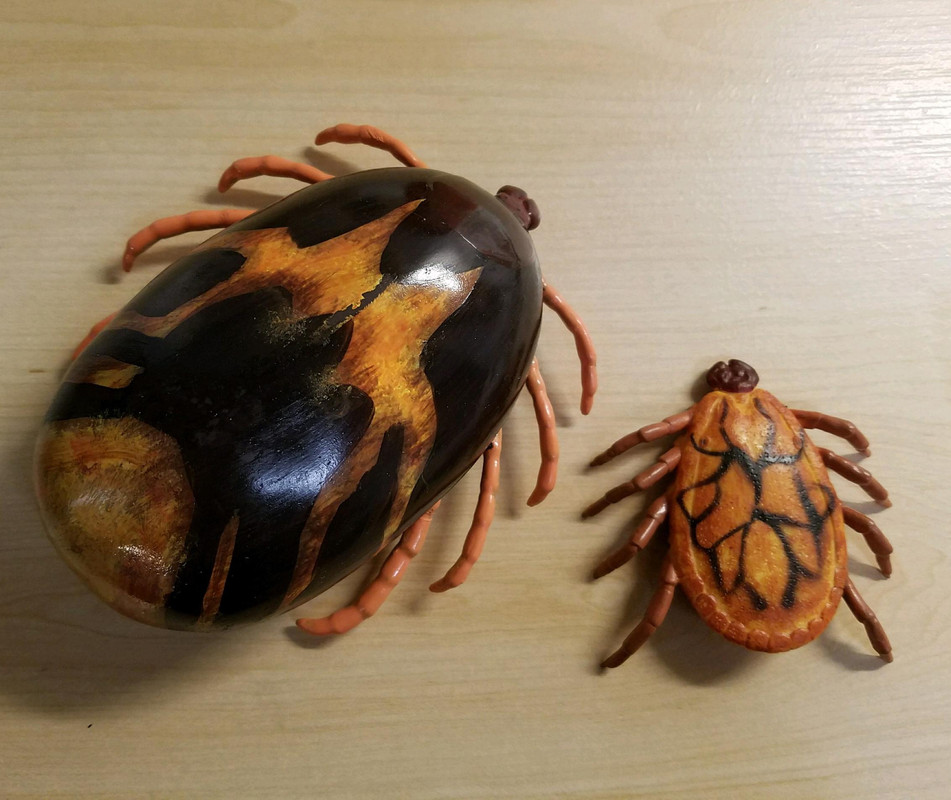
First let’s look at the female, which is either engorged after a blood meal, gravid, or…both! The model is approximately 12.5 cm (exclusive of appendages) for a scale of 10.4:1 for a maximum-sized engorged individual. Not sure what kind of plastic makes up the body, but it is firm and appears hollow. Hallmark features of R. sanguineus include: 1) presence of eyes, 2) presence of festoons (indentations along the posterior margin), 3) an inornate (lacking white maculae) dorsal shield, 4) a cup-shaped anal groove, a 5) an angulate basis capituli (the structure at the base of the mouthparts), which I teach to my students resembles the top of Dracula’s cape (hence, sanguineus), and 6) short mouthparts. The festoons and anal groove are not visible on the female, but, those structures are often hard if not impossible to perceive on a fully-engorged individual. The dorsal shield is the right color, but the eyes along its margin are missing. The mouthparts are the correct size and shape. The shape of the basis capituli is also not correct, which I attribute to the overall stylized nature of the model.
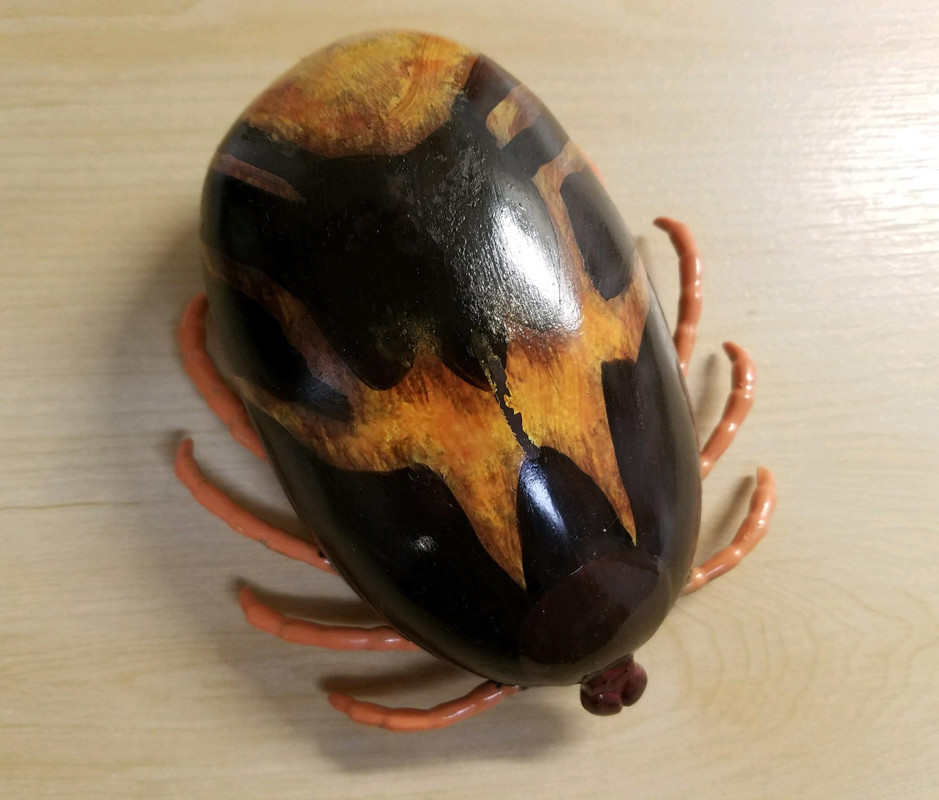
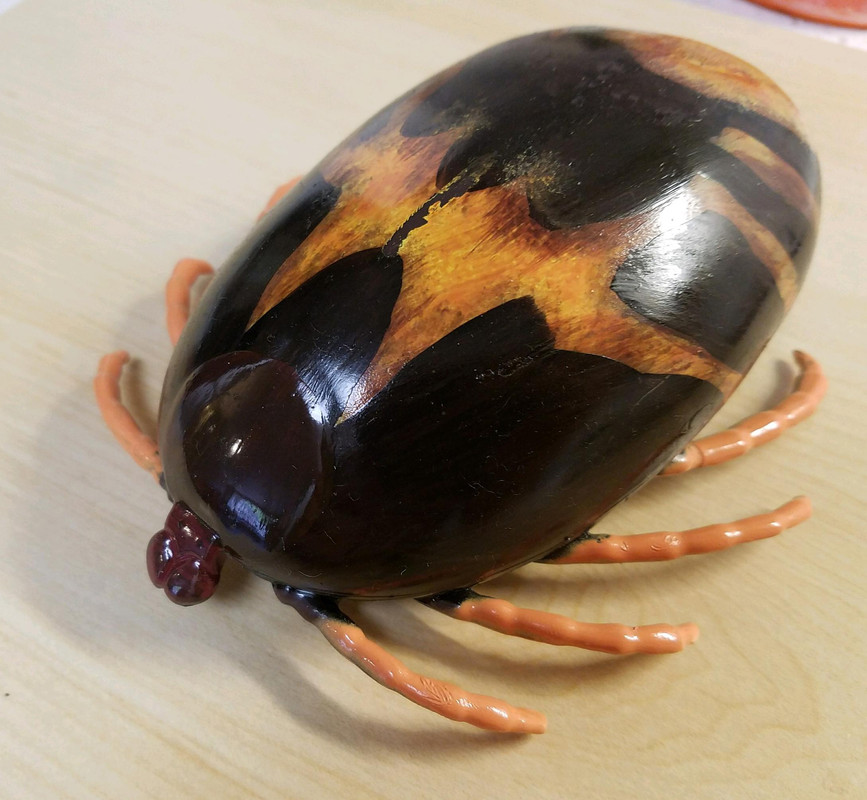
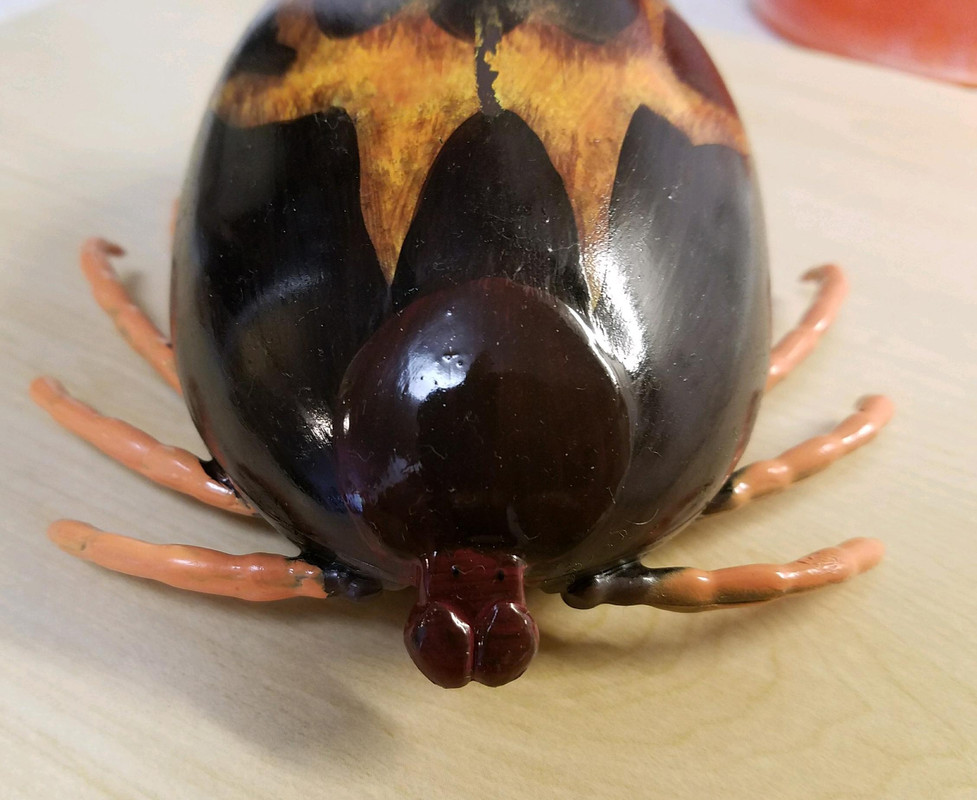
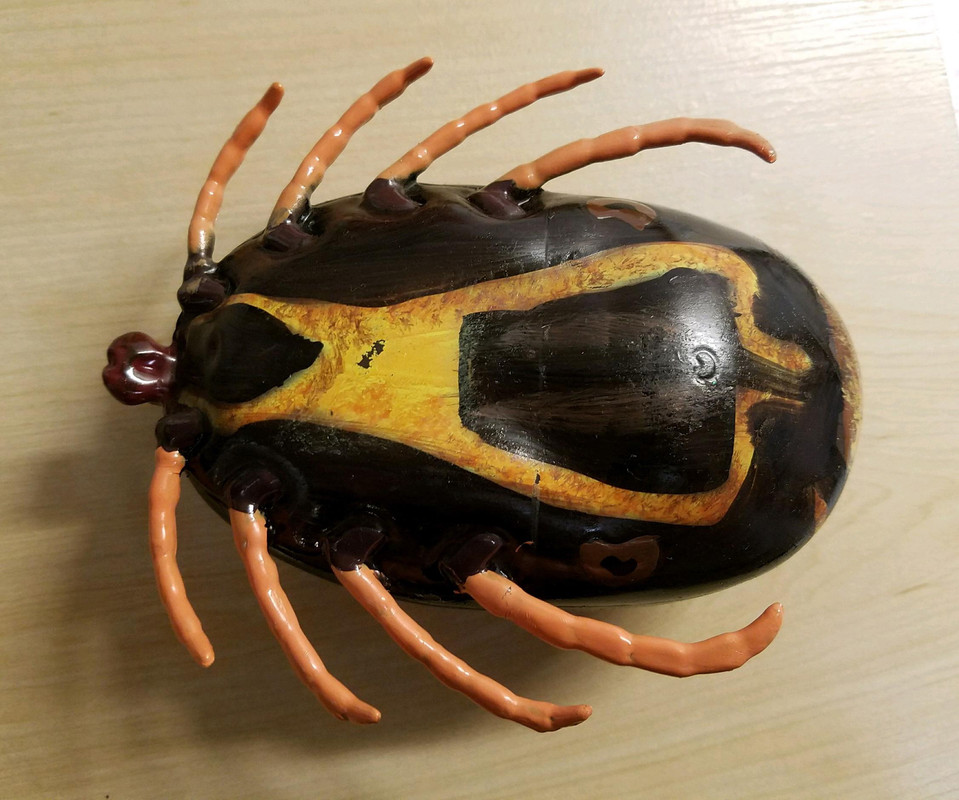
Next let’s look at the male. It is a solid piece of plastic, measuring approximately 7.0 cm (minus appendages) for a scale of 31.4:1-22:1. The male and female appear to be in scale with one another, but the scales don’t calculate that way (I think the proportions of the female might be a bit off). Because the male isn’t engorged, his anal groove and festoons are visible. The dorsal shield is the correct color and eyes are present. The mouthparts are the right size and shape but, like the female, the basis capituli isn’t the correct shape.
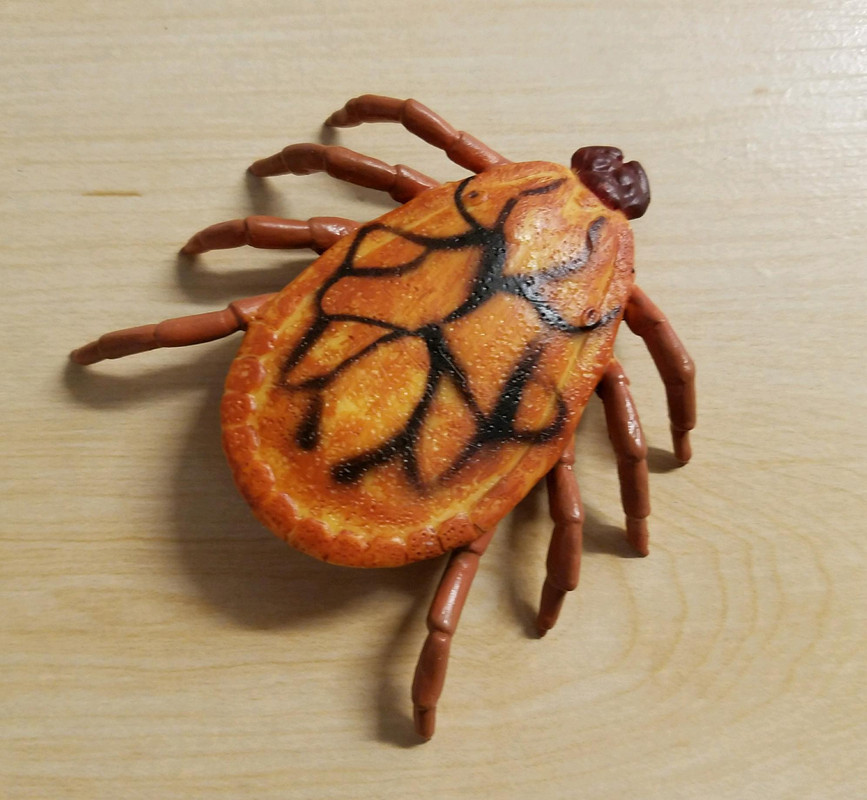
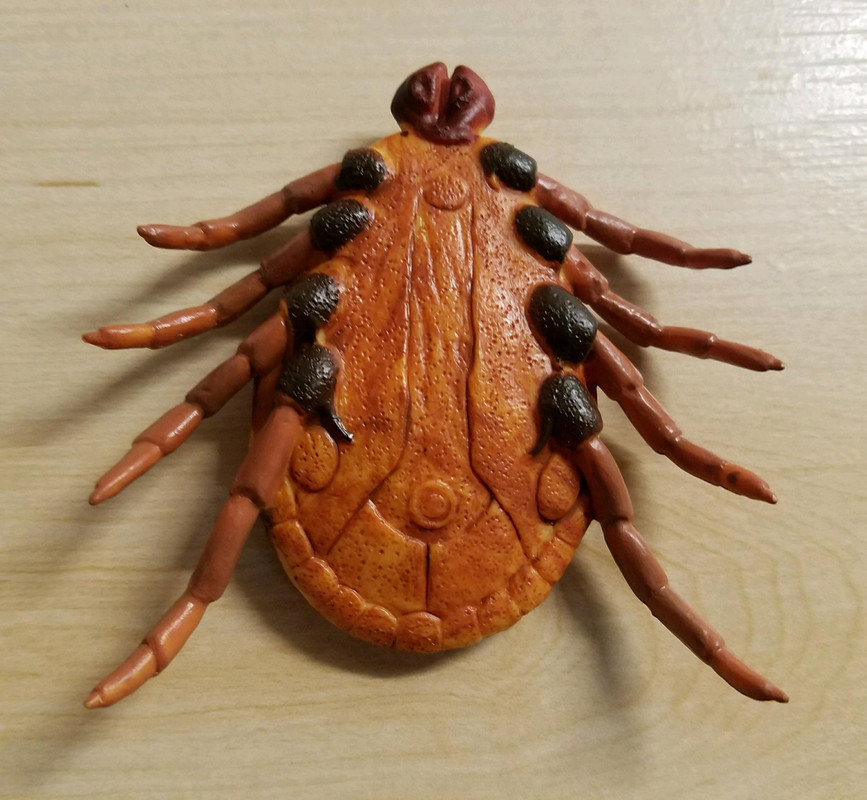
This is a cool novelty set, but likely only to appeal to specialist collectors. They were produced as marketing premiums, and therefore only likely to be found on second-hand auction and buying sites (it’s been a while, but I think mine were purchased on YAJ). The first time I saw them on YAJ, I actually lost the bid, so when these came up, I think (if I remember correctly) immediately bid the equivalent of $100 USD to acquire them. And I have no regrets! In addition to being a collector of toy animals, as a medical parasitologist and entomologist I wasn’t about to let them get away a second time!
Disclaimer: links to Ebay and Amazon on the AnimalToyBlog are affiliate links, so we make a small commission if you use them. Thanks for supporting us!



